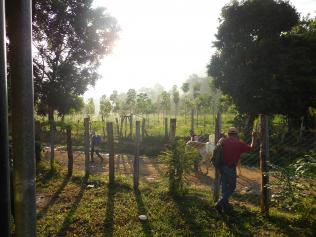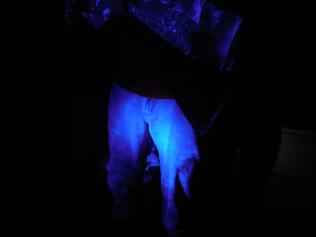In Dartmouth Cancer Center's research platform in rural Honduras, subsistence farmers who typically have about 4 years of education, buy and apply up to a dozen different chemical agents to their fields and crops annually. There is no FDA or effective governmental control to ensure the products for sale are safe, or even that the materials are properly labeled. Several products that have been banned in the U.S. and Western Europe are readily available in any hardware store in Honduras.
In 2017, we launched a study to test farmers' baseline knowledge, attitudes, and behaviors about agricultural chemicals, provide an educational intervention and retest knowledge, attitudes, and behaviors post-intervention. We learned that farmers are concerned about the products and know others who have had serious medical problems after spraying their fields. All the farmers reported storing the chemicals (usually in open paper sacks) inside their homes, often under the bed. As one farmer said, "Our chemicals are safe from robbers but our families are not safe from the chemicals."
The educational intervention centered on adding fluorescent dye to farmers' backpack sprayers and after they returned from the fields, using fluorescent light to reveal the splatter on their skin and clothing.
Concurrently, participants were offered the opportunity to begin using a new facility to store their chemicals and wash themselves and equipment post-spraying. Farmers who participated in the educational dye demonstration were significantly more likely to improve their technique and had measurably less splatter on their skin and clothing than farmers who did not participate in the demonstration.
Related publications
Flynn III TG, Dunaway CM, LaRochelle EPM, Zuniga J, Barahona Campos R, Reyes García S, Cervinski MA, Spaller MR, Romano ME, Kennedy LS, Bejarano SA, Lyons KD, Tsongalis GJ, Huyck KL, Reducing dermal exposure to agrochemical carcinogens using a fluorescent dye-based intervention among subsistence farmers in rural Honduras World Cancer Congress / UICC, Kuala Lumpur, Malaysia (2018).

